The American Paso Fino Horse
By Stella Manberg-Wise
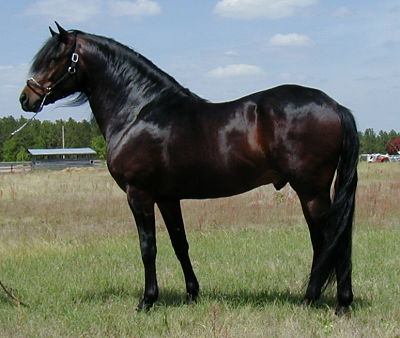
While the Paso horse was developed from the Spanish Jennets brought to the New World by Colombus and subsequent Spanish explorers, each geographic area, such as Colombia, Peru and Puerto Rico, developed their “own” brand of this famously smooth gaited horse. Initially, it was geographic distance that created the isolation to specifically breed a horse to a standard that takes in account local needs in the utilitarian society of old, but in the latter half of the 20th century, when “sport” became the dominant use, so standards were built more so on cultural taste, and the differences are far more a matter of local recreational interests and nationalistic aesthetics.
In the USA, we’ve pretty much done the same thing! The first persons bringing Paso Fino horses back in any quantity were the military families stationed at Ramey Air Force Base, where there was stabling for recreational horses (as there is on some bases in the US, too). Many AF people were able to purchase Puerto Rican Paso Finos, primarily those not so “fino-fino” (very tight gaited) to use in such recreational activities, including gymkhana events such as pole bending and barrel racing, as well as drill teams and local trail riding….in other words, the versatile family horse-or horses, and many career servicemen had their entire families, wives and children, living by the Base. Needless to say, when these service people’s tour of duty was over, their families returned to the USA mainland, bringing their beloved horses back with them.
This is not to say that the horses purchased by these families were any less quality in conformation or ability to maintain a totally natural, even four beat gait—it is only to say that, unlike the standards of the Puerto Rican show ring, favoring and cultivating a tight, extremely rapid “classic fino” Paso Fino gait, the horses first preferred by Americans were more so those that were better capable of performing the ground-covering gaits of corto + largo- which were really the gaits that the Spanish originally developed for covering great distances comfortably, prior to the development of road systems that allowed for carriages and likely, what any explorer would favor in rough, uncharted terrain.
Ramey AFB PR Lazy R Paso Fino Horse riding exhibition 1964 or 1965
These initial families started a new registry in the United States, known as “American Paso Fino Pleasure Horse Association,” only later dropping the word “pleasure,” more so to shorten the name, but not the concepts for which the horses were imported. “APF” preferred staying a primarily a registry with more of a recreational philosophy, so in 1973, some of the founding members that wished to focus and develop a show circuit and more active promotion of the breed was founded, known then as “PFOBA,” or, the Paso Fino Owners and Breeders Association, which later became the well-known “Paso Fino Horse Association”(PFHA)of today.
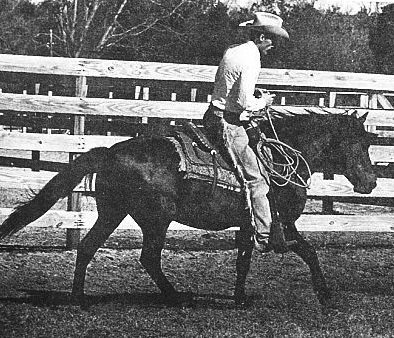
Colombian horses were admitted into the original registry right from the beginning. This started with the large number of imports brought over by Colin Phipps to breed the well-known “que tal” horses of Meridian Meadows, a program whose goal was to produce quick-footed, agile yet smooth riding working cattle horses. While “Paso Colombianos” were used for such work, used more so those with a trottier gait called “Trocha” horses, Phipps worked to bring the squarer(even 4 beat) smoother moving “Paso fino” gaited horses. George La Hood and Alberto Uribe were a few that also brought in Paso Colombianos of the fino gaited type, and while many years later, the Puerto Rican Federation(which has remained “puro”) frowned upon even calling anything but a Puerto Rican horse a “Paso Fino,” a number of Colombian horses, such as stallions Anfitrion, Carussel, and Leo, had been brought into Puerto Rico at that same time, due to the fear by some breeders of too much inbreeding on the small island, to introduce hybrid vigor; these were accepted by some registries, but not in the Federacion.
Following the Puerto Rican example, the first Colombian/Puerto Rican crosses (and visa versa) began in 1967, by George LaHood, Angel Usatequi and Alfonso Cameosas, among others. This practice produced a larger horse, combined the best traits of both…and, of course, were considered a combination of “strains” of Paso Fino horse, not necessarily separate breeds…although Puerto Rican purists do consider theirs a separate breed from American and Colombian Paso horses. In fact, it became so popular, that the numbers of pure Puerto Rican Paso Fino horses were reduced in the US, and the “puros” are still considered endangered. The ‘80s brought in an influx of fresh Colombian blood, so their populations actually increased in the US. Since it’s the desire of pure Puerto Rican breeders to preserve their original name to designate only their horses at this time, there is an edict by their Department of Agriculture, that to advertise an equestrian event as “Paso Fino,” it must be for pure Puerto Rican horses only. The still popular mixes, originally and still bred for their versatility above all- are commonly called, “American Paso Finos.” (although I’d surmise, pure Puerto Rican afficiandos would prefer a return to the name, “Paso Colombiano” and mixes, “Paso Americano.”)
When showing first started here in the United States, the divisions were Bellas Formas (conformation) as shown in Puerto Rico, on double long lines(linedriving in gait); Classic Fino, Performance, and Pleasure. Classic Fino was as in Puerto Rico, the lower, tighter, lighter, and quicker the step, the better…..as used to be said, the way of going was as if, “walking on hot coals.”
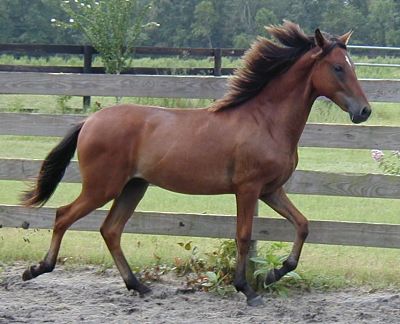
In both Puerto Rico and Colombia, there originally was only a “Paso Fino” class, where purity of gait—the evenness and consistency of 4 even beats being paramount, and the quicker, tighter horses given preference over larger gaited horses—but never at the expense of correctness of gait…as demonstrated and clearly heard by all on the “sounding board.” Puerto Rican horses also had a division called “General Condition,” to demonstrate versatility in the corto and largo, but they are secondary to the “Paso Fino” classes.
In Colombia, there are also “Paso Fino” classes with the exact same priorities, including a sounding board, but their other classes also include other gait divisions, such as “Trocha Pura,” “Trocha y Gallope,” and “Trote/Gallope”…trocha being an unevenly cadenced 4 beat gait, and trote a cadenced, gaited trot with little to no suspension…..unlike the corto + largo, which are same gait, but at different speeds.
In contrast, in the United States, the Performance and Pleasure classes ask for the corto and largo, the same footfall sequence of gait, but in a medium step size to an extended one, showing marked differentiation between the two speeds. In Performance, the action should be high and rapid, the horse still having “brio,” similar to the Park classes seen in other American breeds.
Pleasure Classes called for more relaxed horses “American style pleasure,” with a lower way of going, a back up, mount/dismount, while originally the class called for true pleasure horses on a loose rein, today’s classes often are horses more aptly recognized as “show” pleasure, and the original pleasure horses are now in the Country Pleasure classes…. ….contrasting only to some degree with the Puerto Rican “General Condition” (street) classes, which call for a pleasure horse capable of performing corto, largo, walk, andadura, canter, + gallop.
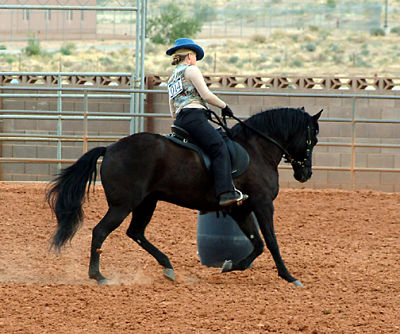
While patriotism and preference for one’s own cultural heritage and taste has created differences in breeding priorities among the Puerto Rican, Colombian, and “American” breeders of mixes, its interesting that while there has been the most competitiveness between pure Puerto Rican and pure Colombian breeders, there’s also more similarity in the priorities, as both prefer to breed for the “Classic Fino” form of the gait…for the very tightest, quickest footed form of movement, with little impulsion…and both have, of late, both come to prefer the low action…which is, of course, due to efficiency of motion, more likely to be quicker and shorter strided.
And, while in the United States (and to some degree, Puerto Rico, in the more so Colombian oriented “Los Abiertos” show circuit), there are in fact, breeders preferring to also breed for a more classic fino gait, for the most part, persons breeding mixes nowdays, as before, tend more so to breed for the American recreational market….that is, horses with a “long thread:” the ability to go from a tight corto to a fast largo, retaining the correctness of gait, but with the versatility to adapt their gait speed to the task at hand—in other words, a “using” horse.
After some political and economic upheaval in Colombia, timed right when a search for new bloodlines (including a trip to Colombia sponsored by PFOBA for breeders/owners), a number of Colombian farms came to the United States, introduced by the spectacular American debut of famous Capuchino and others at the 84 Nationals, which had profound influence on the way horses were shown, trained, and even how riders attired themselves. Some of this influence was really good, as it raised standards of showmanship and a more serious, businesslike attitude into the show world…and some, not so much.
During the early to mid 90s, when the number grew, and some horses belonging to “afficiando” breeders (ones professionally breeding for the show ring as goal) could not as successfully compete in the preferred class of Classic Fino, there became subtle changes in rules, particularly in description of the largo and walk, that allowed for a more “fino” like horse to compete in Performance, and not long after, the Pleasure classes, making these more of a “Show Pleasure” class….more so a description of relative style, than one related to a true pleasure horse. This allowed for horses that were not going to be the top competitors in Classic Fino to still be marketed as “show horses,” but ultimately, it displaced many American breeders who were more so “market breeders,” breeding for the ultimate “versatile” Paso Fino horse, and simply used the show ring as a means, rather than an end, in order to “rate” the quality of their horses.
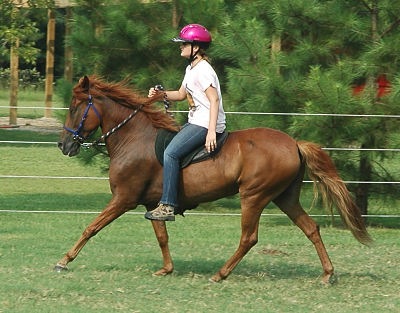
Luckily, there has been some revision of late, as the dwindling interest in showing as it is, is renewed and refreshed of late, by once again including, at least at Nationals and some regional shows, classes that reflect the ideas and abilities of the American, versatile Paso Fino horse, beyond the usual Western Pleasure, Trail and Versatility classes, to include Barrels, Poles, Largo Race, and Horse Soccer, to name a few.
And while the basic typey “way of going” of the Paso Fino is still the same–a quick movement of legs staying more so under the body that most other gaited breeds, such as Tennessee Walkers, Missouri Fox Trotters, Racking horses, or even Icelandics…with even action, front and back-distinguishing them from Peruvians….it gives them the ability to climb and descend rough, steep terrain almost as well as a mountain goat, even meander between trees in trail-less deep forests in a blink of an eye….even sort or cut a cow or two….. They are able to smoothly transition from a gait that’s tighter and more agile than any other gaited breed, when necessary, to one that’s as fast, or even faster- than a canter, and back, and exhibit true extension, in the dressage sense of the word…not just “relatively speaking.”
That’s why, if you’re interested in participating in any of the recreational activities now gaining popularity nationwide amongst many other breeds, such as ACTHA competitions, obstacle and trail classes, competitive and endurance rides, mounted shooting, extreme cowboy events, team penning or cow sorting, hunter paces…. rather than settling for a horse bred for the breed show ring, that didn’t make the cut – remember that the American Paso Fino is the one specifically bred just for YOU..
~Stella Manberg-Wise, owner of: Great Blazes Farm Paso Finos, author, copyright 2014. Permission is granted to share this article for educational purposes only as long as proper credit and acknowledgment is given to the author and source. No parts of this article may be reproduced for commercial purposes without the express written consent of the author.
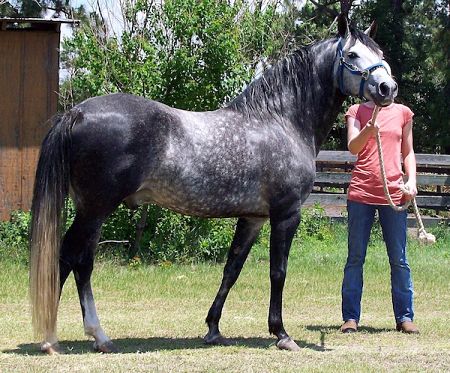


Love this article. It needs to be published in PF Horse World.
I can help with the real y story of american paso fino horses with the influence of colombian paso fino horses because my father Camilo de Francisco Was the first person that export colombian paso finos to Puerto Rico and the to the USA in 1969 to sold them ,in 1954 my grandfather and some friends took some Colombian pasofino horses to Dallas but only for a show.
I have all the History in documents and pictures if you want ,we can think how to publishe it.
Would love to include an article and your photos, Enrique. Please use our comment form so I can get your email address.
https://www.spanishhorsetack.com/contact/
Do you know anything about the brand, 8h ? It was on my mare’s sire, but she is a rescue (she has no papers, but I personally knew both dam and sire previously). I was told both parents were originally imported from PR. Thanks for any help…
I personally do not know the brand, but there is a Facebook group specifically for Paso Fino brands, and some of the members may know it:
https://www.facebook.com/groups/PasoFinoHorseBrands/
I LOVE this history because my GREAT UNCLE Anastasio Iriarte was also one of the Colombian Breeders of Paso Finos to bring horses to that Dallas TX exhibition in 1954! Along with the father of Alvaro Uribe the last President of Colombia!
That is so great. Alvaro! You have a wonderful Paso Fino and family heritage!
Hello Enrique,
I am conducting some research and would like to ask you about your grandfather. Is that Don Ignacio de Francisco?
Please contact me at 3058079262 or maizamartinez@hotmail.com
Thank you for your time!
Wonderful article. Thanks for sharing.
And here I was, thinking I was the first service person to bring a Paso back to the U.S. in the early ’90′s! I didn’t truely learn about the Paso until I moved back to the U.S. because all the shows I attended while living in PR were in Spanish. Oh, to be able to go back in time!
Thanks for sharing the article.
You are welcome, Kathy! I love watching the video. I had one person tell me that watching the video was like remembering a dream–it is so nostalgic and beautiful horses moving so smoothly.
Family was in PR stationed at Ramey1958 -1960. Was members of riding club and had the most wonderful times riding our Pasos. We brought 2 back and settled in Texas.
So you had some of the first Paso FInos in the US? AMAZING! Would love to see some photos of them!
Beautiful Air Force video- I grew up in Air Force during that time 1964 it was very egalitarian and wholesome era as shown by your video with the riders- I own three pasos today but living in Miami cant seem to find that charm due to the glamorous and wealthy sophistication injected by South Florida into the breed.
Thanks for your wonderful comment, Stephanie. I love this nostalgic video. I also grew up in FL, so I understand what you have written. If you ever get tired of FL, NC is nice, and there are quite a few Paso people in the area.
We were station in Puerto Rico from 1959-1962. We fell in love with the horses. We brought back 3 horses from there. I still to this day have in our family a few. You can’t find a more giving horse.I still remember Rosalie McWilliams blood Bay horses. They were beautiful
Love your Article…love the History of this Wonderful Breed…we have a few & am always saying that they are the best keep secret of the Horse World…it is sad that so many are in trouble & being sent to slaughter these days…I believe that there should be a Promotion in a grand scale to educate the Public to re-introduce this Breed because there are so many misconceptions about them. In a very small way I do what I can through my Schooling called A-Willing-Way Horsemanship but I fear that if something is not done soon…we all as lovers of the Horse may lose this Treasure.
Thanks so much for your caring comment, Frankee Fulilove! I agree with you about everything you wrote. I had a Galiceno growing up, and sadly there are now only 100 or so of them left in the USA! I would hate to see our Paso Finos going down the same extinction trail. We who love and cherish this wonderful breed have ALL got to get together and fight for our beautiful Paso Finos before it is too late!
Just found this site. My dad was stationed at Ramey from 61 to 64, I graduated HS from Ramey in 64. I had 2 Paso Finos at the Lazy R for those 3 years. Still have all the Metals, Ribbons I won at the horse shows. My 2 horses were Roma and Sugar, sold them to Ron Boone, who I graduated with, he went on to win many horse shows with Roma. I loved the video. My parents are both dead but I know they had a lot of home movies, I have to try and find them.
Neil
Thanks so much for your comments, Neil. It is so great that you had Paso Finos at Ramey around the time this video was made. Wondering if you recognize anyone in it? Would love to see some of your family’s home movies or photos with your Paso Finos.
I love every bit of this history of our breed. I’m sorry to see so few pure Puerto Rican pasos in the States. I’m thankful for Stella writing this history . I’m about to rescue one coming my way that is registered in the American paso registry. He will be my riding companion for many yrs to come. I hope more history & stories will be written about this breed. I have 10 myself & will always carry this breed close to my heart . I’ve heard from a few Puerto Rican’s that the true gait is going away & just tighter way of going & no true gait. We lost something along the way. I’ve talked to them that say with bigger size they have lost their natural gait. Now they see the mistakes & going back to the older lines to get the natural gait . I hope so & I’ll fit right in because I’m short anyway. I prefer gait over quickness anytime of the day. I’ve seen so many going to slaughter that it breaks my heart. I do the best I can to rescue as many as I can financially. Soon we will see the demise of PFHA & our breed if we all stop breeding entirely. I haven’t had any in 3 yrs . We have to educate those in a diplomatic way don’t breed ur backyard horse . Just enjoy him or her. The type of training needs to stop for its messing up these beautiful animals. Things have to change & soon or there will be none left.
We lived in Puerto Rico from 1959-1968. Starting with my 10th birthday in 1969, my birthday treat was to go to Barranquitas in the mountains to rent a Paso Fino to ride. We moved to the country outside Rio Piedras in 1965, and in 1966, my father came home one day with a Paso Fino for me in the back of a pickup! I rode Capitan everywhere and had a local friend who also had a Paso to show me proper equitation. Sadly, we left in 1968, and Capitan stayed with that friend.
In 2002, I was doing Competitive Trail and needing a new horse as my Appaloosa was sometimes lame at check-in. Friends were riding Arabians and Missouri Fox Trotters, but I wasn’t totally convinced that’s what I wanted to look for. Then I remembered Capitan and the wonderful gait he had and such a marvelous temperament! I mentioned to one friend that I was going to search for a Paso Fino (this is Missouri, she looked at me like I’d grown two heads!), and another acquaintance overheard and said she had a rescued mare who had a 6-month filly, and they were Paso Finos! I went to get the filly, came home with both the mare (boy, was she a mess, took over a year to build that trust) and the filly, and the dark mare is the Horse of My Heart. 15 years now and I have trusted her with my life in the Missouri Ozarks on trails the would take your breath away. She is a Diva and we always have fun and come home safe!
Love your story,Dana!
I love this breed and I am very concerned about the trend of breeding strictly for show (fino) and losing the utilitarian value of extended stride in gait. I attempted to breed pleasure horses hoping to develop the market in the western states of the US. Unfortunately the market crashed in 2008 and my stallions were gelded to avoid overbreeding. We sure need to find a way outside of the show ring to bring the versatility of the Paso Fino horse into the public eye before it’s too late.
I have raised, trained, and showed Paso Finos for 40 years. I still have 3 and hope to keep riding until my dying day. They have been and still are one of the great Joy’s of my life. I am addicted to the 4 beat, smooth gait. My opinion on why they are going extinct is what us humans have done to the breed. While I admire the Fino horse and it is amazing to watch, that particular horse is not the one people want to ride or are looking to buy. A good tempered corto, largo should be the standard of the breed. Not enough of them are being bred and people can’t find what they are looking for. There is nothing more exhilarating than to fly over the terrain on a well gaited and smooth largo horse. Also, the biggest reason that I bought my first and every Paso is for their smooth ride. I see too many fancy stepping but rough to ride Pasos. What a shame. I’ll never forget seeing Capuchino and his graceful, quick, but flowing gait lose to a stiff legged, sewing machine horse at Nationals of 1992. Again, what a shame. Let’s breed the Pasos that people want and will buy and ensure the long life of this amazing breed. The Paso Fino!
Enjoyed info. Looking for specific info, maybe not something you cannot answer. After watching the Movie Return of the Seven, I realized they used Paso Fino horses in thr movie. Just wondered about the horse Robert Fuller rode, I believe iy was a Paso.